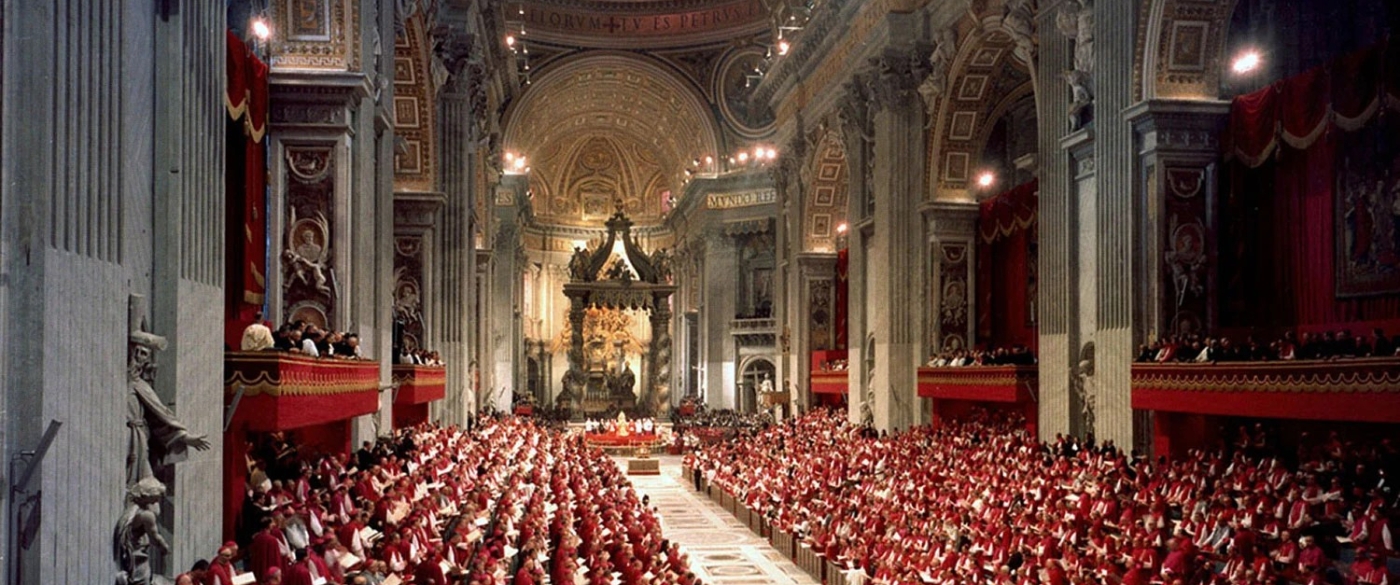Upcoming paper presentation for the 2024 Mariological Society of America Meeting, May 21-24, 2024, Washington.
This paper does not address one or more mariological themes within the documents of Vatican II, but interprets the documents of Vatican II within a Marian hermeneutic. In his 2005 Christmas address to the Roman curia, Benedict XVI famously advocated a hermeneutic of reform as a combination of continuity and discontinuity at different levels. However, exactly where and how to draw the border between these levels remains a debated issue. This paper proposes Mary as the cipher with which to unlock and understand that debate as well as the council documents in general.
The first part of the paper develops the overall case for such a Marian hermeneutic. The recurring theme of the council was the Church and her faith in relation to ‘modern man’ in the ‘contemporary world’ – as explicitly confirmed by Benedict XVI in the very same address. The thrust of this paper is to interpret this ‘modern man’ in his ‘contemporary world’ as implicitly referring to Mary. Whereas the early christological and trinitarian debates pertained to the relationship between nature and personhood, they all dealt with divine persons – except for the Theotokos debate. But the modern era saw no less than two Marian dogmas, thereby dealing specifically with the relation between a created person and the divine persons. This is taken as the ‘sign of the times’ with which to understand the council – the nature, dignity and freedom of the created person. Mary as a created person – and as a lay woman – can thereby show us something that is distinct from Christ as the incarnation of a divine person in a (male) human nature.
The proof of the pudding is in the eating, so the second part of the paper actually applies this hermeneutic to various conciliar documents. The central call in Sacrosanctum Concilium for an active participation of the faithful is understood as Mary’s active role in the incarnation and redemption. Instead of taking over more priestly functions performed ‘in persona Christi’, lay participation in the liturgy is acting ‘in persona Mariae’. The key claim in Gaudium et Spes that man is “the only creature on earth which God willed for itself” is understood as referring first and foremost to Mary, combining a premodern theocentrism with a modern anthropocentrism while avoiding the dangers of both. For Nostra Aetate and Unitatis Redintegratio, a spousal Marian reading combines the classical catholic dictum ‘extra Ecclesiam nulla salus’ with the inherent worth of non-catholic and non-christian religious communities, by basing the former on the exclusivity of the spousal covenant and the latter on the worth of the (potential) spouse. Finally, for Dignitatis Humanae, a Marian hermeneutic can offer a ‘sana laicità’ in the form of a relative autonomy for secular authority without the pitfalls of an atheist or indifferent state, because a Marian personhood for the state guarantees her reciprocity vis-à-vis the Church at the same time as her radical openness towards the Church.
